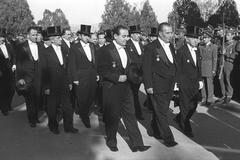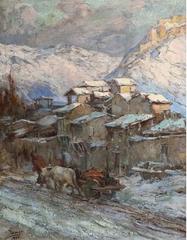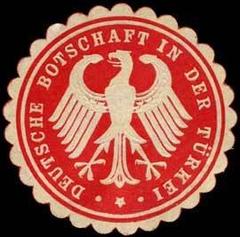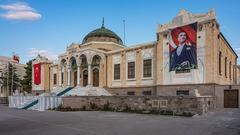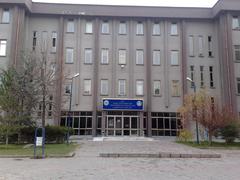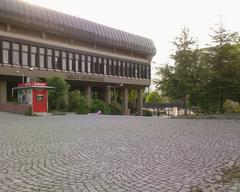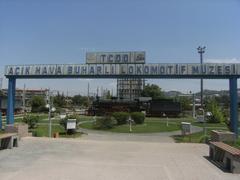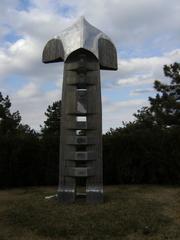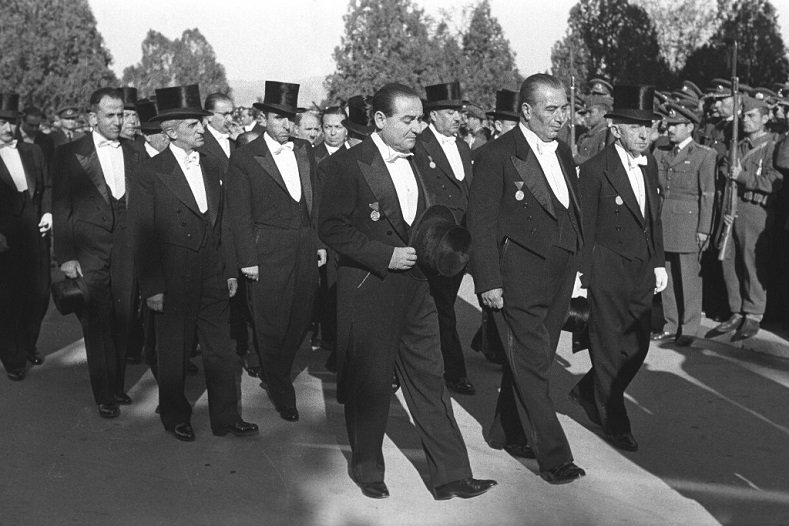
Anıtkabir Ankara: Visiting Hours, Tickets, and Historical Sites Guide
Date: 14/06/2025
Introduction
Anıtkabir, the monumental mausoleum of Mustafa Kemal Atatürk—the founder and first President of the Republic of Turkey—is Ankara’s most iconic landmark and a powerful symbol of Turkish national identity. Perched atop Anıttepe Hill (formerly Rasattepe), this grand structure not only serves as Atatürk’s final resting place but also stands as a testament to Turkey’s journey from its ancient roots to its modern, secular republic. This comprehensive guide details Anıtkabir’s historical background, architectural significance, visiting hours, ticketing, accessibility, travel tips, and nearby attractions to help you plan an enriching and respectful visit to this revered site (Wikipedia; Mausoleums.com; Visit Turkey).
Table of Contents
- Significance and Origins of Anıtkabir
- Mustafa Kemal Atatürk: Visionary Leader
- Planning, Design, and Construction
- Architectural Features and Symbolic Elements
- Visitor Information
- Site Layout and Key Highlights
- Nearby Attractions
- Cultural and National Significance
- FAQ
- Conclusion and Recommendations
- Sources
Significance and Origins of Anıtkabir
Anıtkabir was conceived after Atatürk’s death in 1938 as a tribute to his leadership and transformative reforms. The site selection was both symbolic and historical—Rasattepe was an ancient Phrygian burial ground, linking Turkey’s modern aspirations to its deep past (The Other Tour). The project was realized through a national and international competition, ultimately awarded to Turkish architects Emin Onat and Orhan Arda, whose design harmoniously blended Seljuk, Ottoman, and Art Deco influences (Wikipedia).
Mustafa Kemal Atatürk: Visionary Leader
Mustafa Kemal Atatürk (1881–1938) was a military commander, statesman, and reformer. He led the Turkish War of Independence (1919–1923) and established the Republic of Turkey in 1923. His sweeping reforms in education, law, language, economy, and culture modernized Turkey, laying the foundation for a secular and democratic nation (Visit Turkey). Anıtkabir stands as the embodiment of his enduring legacy (Los Planes Gourmet).
Planning, Design, and Construction
The design for Anıtkabir emerged from a 1941 architectural competition, attracting 49 submissions. Onat and Arda’s winning concept reflected both monumental grandeur and a synthesis of Turkish architectural traditions (Wow Cappadocia). Construction began in 1944 and, despite the challenges of World War II, was completed in 1953. The mausoleum’s completion marked the fifteenth anniversary of Atatürk’s death, when his remains were ceremonially transferred from Ankara’s Ethnographical Museum (Mausoleums.com).
Architectural Features and Symbolic Elements
Anıtkabir is a prime example of the Second National Architectural Movement, characterized by neoclassical forms, symmetry, and the use of local stone (dokmimarlik.com; ktb.gov.tr). The monument is distinguished by:
- Lion Road (Aslanlı Yol): A 262-meter walkway lined with 24 pairs of Hittite-inspired lion statues, symbolizing power and peace.
- Ceremonial Plaza: An expansive square for national ceremonies, paved with intricate geometric patterns.
- Hall of Honor (Şeref Holü): The mausoleum proper, marked by massive columns and a 40-ton red marble sarcophagus.
- Towers: Ten thematic towers encircle the plaza, each representing key values in Turkish history.
- Peace Park: A landscaped area with flora from around the world, reflecting Atatürk’s dictum: “Peace at home, peace in the world.”
Decorative motifs draw from Anatolian, Seljuk, and Ottoman art, and the entire site is imbued with symbolism related to Turkish unity and progress (ktb.gov.tr).
Visitor Information
Visiting Hours
- Summer (April–September): 09:00–17:00
- Winter (October–March): 09:00–16:00
- Daily Lunch Break: 12:00–13:00
- Note: Hours may change on national holidays and special events. Always check the official Anıtkabir website for up-to-date information.
Tickets and Admission
- Entry: Free for mausoleum and outdoor grounds
- Museum: Nominal fee (about 10 Turkish Lira); bring cash for entry and gift shop purchases.
Accessibility
Anıtkabir is wheelchair accessible, with ramps, wide pathways, and reserved parking. Restrooms, cafés, and a gift shop are available for visitor convenience.
Guided Tours and Events
Multilingual guided tours provide deeper insight into Anıtkabir’s history and architecture. National ceremonies on Republic Day (October 29), Victory Day (August 30), and Atatürk Memorial Day (November 10) are major events that attract large crowds.
Travel Tips
- Best Time to Visit: Spring and autumn for mild weather and blooming gardens.
- What to Wear: Comfortable shoes and modest attire.
- Photography: Allowed in most outdoor areas; restricted indoors, especially in the Hall of Honor.
- Getting There: The nearest metro station is Tandoğan (Ankaray line), about a 10–15 minute uphill walk. Buses and taxis are also available.
Site Layout and Key Highlights
- Lion Road (Aslanlı Yol): Ceremonial approach, lined with 24 lion statues symbolizing unity and strength.
- Ceremonial Plaza: Accommodates up to 15,000 people for national events.
- Hall of Honor: Houses Atatürk’s sarcophagus under a massive marble block; the actual tomb is in a chamber below.
- Towers (Kuleler): Ten thematic towers, each with reliefs and inscriptions representing Turkish state values.
- Anıtkabir Atatürk Museum: Displays Atatürk’s personal effects, Turkish War of Independence relics, and exhibits on early Republican reforms.
- Peace Park: Over 50,000 trees and plants from 104 countries, offering tranquil walks and panoramic views of Ankara (tripoto.com).
Nearby Attractions
Combine your visit to Anıtkabir with these notable Ankara sites:
- Museum of Anatolian Civilizations: Renowned archaeological collections.
- Ankara Castle: Offers panoramic city views.
- Haci Bayram Mosque: Historic religious site.
- Atatürk Forest Farm and Zoo: Recreational and historical area.
- Kocatepe Mosque: Ankara’s largest mosque.
- Hamamönü District: Restored Ottoman-era neighborhood.
Cultural and National Significance
Anıtkabir is more than a mausoleum; it is a national symbol of unity, secularism, and progress. Its architecture and ceremonial functions reinforce Turkey’s republican ideals. The Peace Park’s global flora underscores Atatürk’s vision for international harmony. The site is a focal point for state ceremonies and a place of pilgrimage for millions, inspiring reflection and national pride (Turkish Ministry of Culture).
FAQ
What are Anıtkabir’s visiting hours?
Summer: 09:00–17:00; Winter: 09:00–16:00; closed for lunch 12:00–13:00.
Is there an entry fee?
Entry to the mausoleum and grounds is free; the museum charges a nominal fee.
Is Anıtkabir wheelchair accessible?
Yes, with ramps, wide paths, and reserved parking.
Are guided tours available?
Yes, in multiple languages; booking in advance is recommended.
Can I take photographs?
Allowed in most outdoor areas; restricted inside the Hall of Honor.
How do I get to Anıtkabir by public transport?
Take the metro to Tandoğan station, then a short uphill walk.
Conclusion and Recommendations
Anıtkabir is a must-visit for anyone interested in Turkey’s history, architecture, or national identity. The site’s thoughtful design, powerful symbolism, and comprehensive museum provide a profound visitor experience. For the most meaningful visit:
- Check official resources for updated hours and events.
- Visit during spring or autumn for pleasant weather.
- Explore nearby historical sites for a full Ankara experience.
- Download the Audiala app for guided tours and the latest updates.
For a deeper connection with Turkish history and to honor the legacy of Atatürk, make Anıtkabir a highlight of your Ankara itinerary.
Sources
- Wikipedia
- Mausoleums.com
- Visit Turkey
- The Other Tour
- DokMimarlik
- Turkish Ministry of Culture
- Official Anıtkabir Website
- Tripoto
